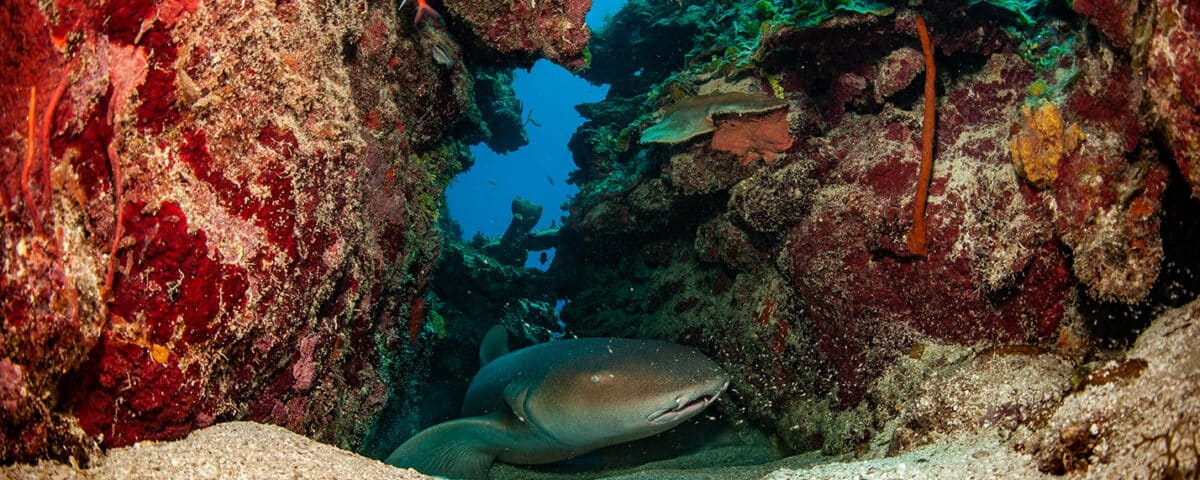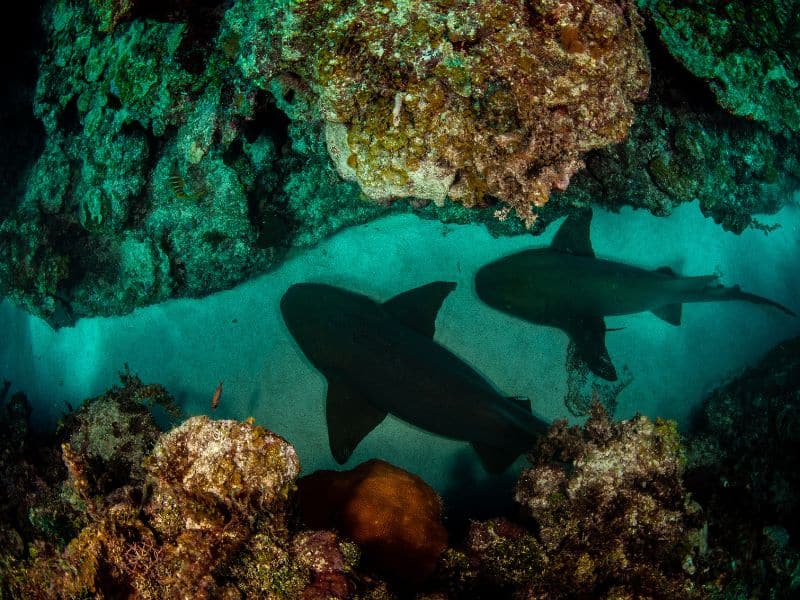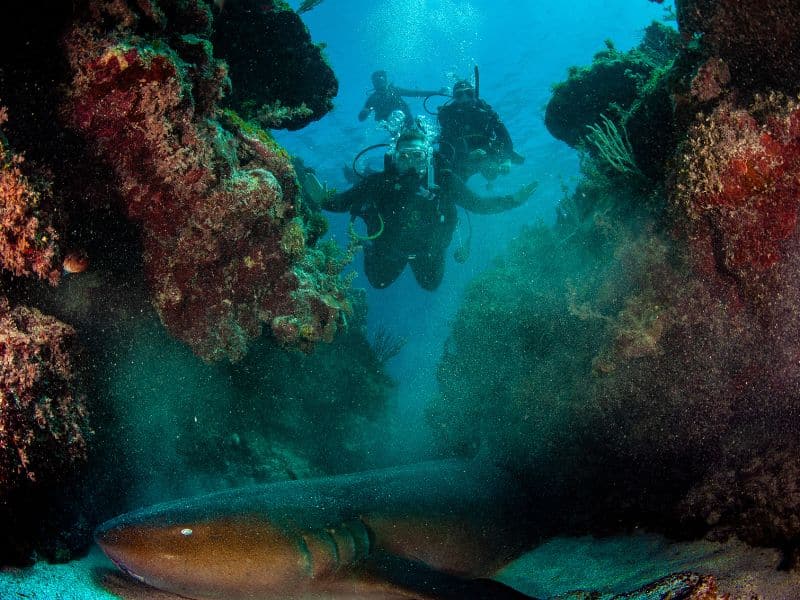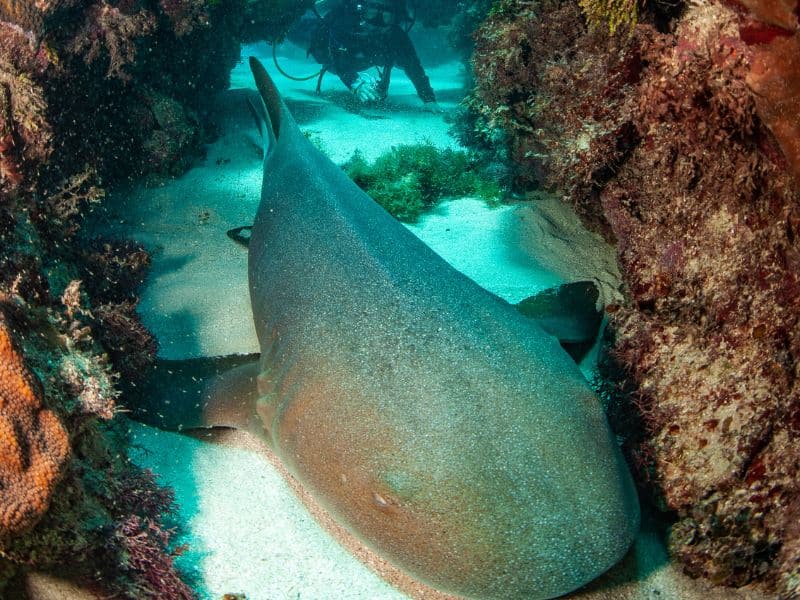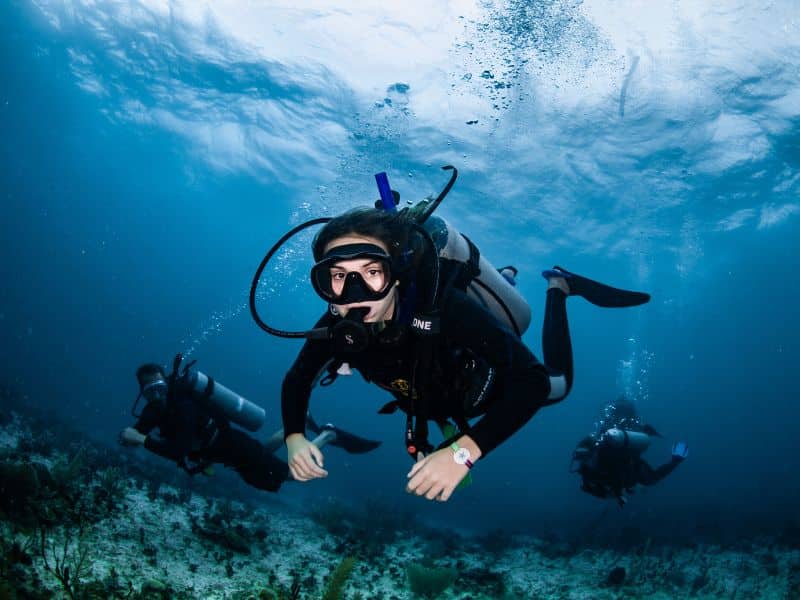1. Jamaica Sharks Species
It’s time to dive into the vibrant underwater world of Jamaica sharks, where a fascinating variety of these animal species inhabit these turquoise waters.
Caribbean Reef Shark
The Caribbean reef shark is a graceful sentinel of shallow coral reefs, often seen gliding effortlessly, embodying the spirit of Jamaica sharks.
Typically medium-sized, it boasts a hydrodynamic shape that allows it to navigate agilely through the reefs. Its coloration varies but is generally grayish on the back and lighter on the belly, providing excellent camouflage in its surroundings.
Tiger Shark
Next is the formidable tiger shark, a true marvel of nature. Distinguished by its striking stripes, this species is both powerful and captivating. Tiger sharks can reach lengths of up to 24 feet and weigh over 600 pounds. They are characterized by their large heads, short snouts, and a coloration that ranges from light gray to brown, with vertical stripes that give them their name. While they may evoke awe, their presence is crucial for the marine ecosystem, helping to maintain the balance of life beneath the waves.
Hammerhead Shark
Keep an eye out for the hammerhead shark, known for its distinctive head shape. This fascinating species is rarely seen patrolling Jamaican waters but demonstrates elegance and efficiency in its hunting technique.
Bull Shark
Occasionally, you may spot a robust bull shark in Jamaica’s brackish waters, though they are not common. If you wish to dive with them, the best time to see them is from November to mid-March in Playa del Carmen, Mexico.
Although it’s possible to see some of these shark species in Jamaica, encounters with them are a privilege enjoyed by only a few lucky divers, so specific excursions aren’t organized. However, the same cannot be said about this other species, which are regular dive buddies.
Nurse Shark
Among these incredible creatures, the nurse shark (Ginglymostoma cirratum) is the true star of Jamaica sharks. With their broad heads and serene nature, these sharks can grow up to 13 feet long, resting peacefully on the ocean floor. In Jamaica, they are often found in groups, displaying unusual social behavior for sharks. They congregate to rest during the day among coral passages, even piling on top of one another, showcasing their peaceful nature.
As night falls, these sharks become more active, dispersing to hunt for crustaceans and small fish. Their gatherings not only provide safety but may also serve a potential purpose in reproduction.
Additionally, nurse sharks, like their fellow species, play a crucial role in maintaining healthy marine ecosystems. They help regulate populations of other animals, ensuring a balanced underwater environment. Protecting Jamaica sharks is essential for both biodiversity and the overall health of our oceans.




